Name Ville du Havre Out of service 22 November 1873 Length 128 m | In service 26 April 1866 Class and type Iron Liner Launched 2 November 1865 | |
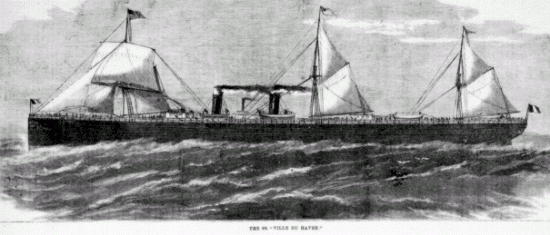 | ||
Fate Sunk after collision with Loch Earn Notes Originally named Napoléon III Builder Thames Ironworks and Shipbuilding Company | ||
Ville du Havre was a French iron steamship that operated round trips between the northern coast of France and New York City. Launched in November 1865 under her original name of Napoléon III, she was converted from a paddle steamer to single propeller propulsion in 1871 and, in recognition of the recent defeat of her imperial namesake, the Emperor Napoleon III, was renamed Ville du Havre.
Contents
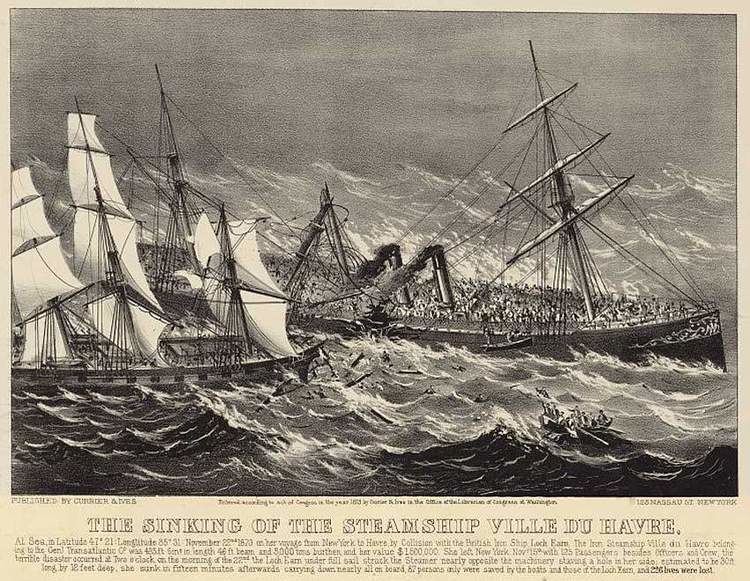
In the early hours of 22 November 1873, Ville du Havre collided with the Scottish three-masted iron clipper, Loch Earn and sank in 12 minutes with the loss of 226 lives. Only 61 passengers and 26 crew members survived, rescued by Loch Earn and subsequently, an American vessel, the Tremountain.
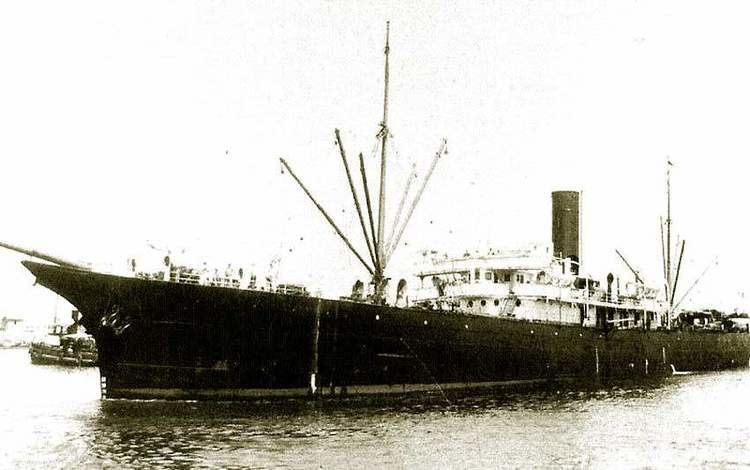
History and description

The Napoleon III was originally built as a paddle steamer by Thames Ironworks, London (engines by Ravenshill & Salked, London) in late 1865 for the Compagnie Generale Transatlantique (French Line). She was a 3,950 gross ton ship, length 365.9ft with 45.9ft beam, straight stem, two funnels, two masts, iron construction, paddle wheel propulsion and a cruising speed of 11.5 knots.

There was accommodation for 170 first class, 100 second class and 50 third class passengers. Launched in November 1865, she sailed on her maiden voyage from Havre for Brest and New York City on 26 April 1866. She made five round voyages on this service, the last commencing in August 1869.
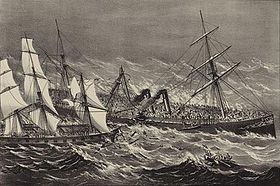
In September 1871, she sailed from Havre to Tyneside in Northern England where she was lengthened to 421.7ft by A. Leslie and Company, Hebburn-on-Tyne and her tonnage increased to 5,065 tons. She was also fitted with compound steam engines and rebuilt with single screw propulsion, and the paddle wheels were removed. A third mast was also fitted and after completion of the works she was renamed Ville du Havre. Following sea trials, she recommenced her Havre – Brest – New York service in early 1873.
Final voyage and sinking
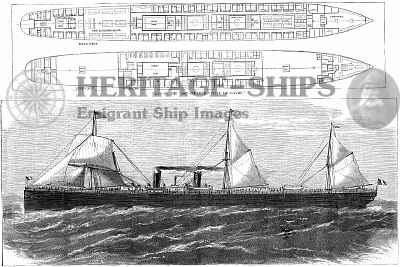
On 15 November 1873, the Ville du Havre sailed from New York with 313 passengers and crew on board, under the command of captain Marino Surmonte. After a week's steaming across the Atlantic ocean, she collided with the iron clipper, Loch Earn at about 2 am in the morning of Saturday, 22 November at the position 47°21′N 35°31′W. At the time of the collision, Ville du Havre was proceeding under both steam and sail at about 12 knots.
The captain of the Loch Earn, after first sighting the Ville du Havre and realising she was dangerously close, rang the ship's bell and ported his helm. The helm of the Loch Earn was put to starboard, but Ville du Havre came right across the Loch Earn's bow. The Ville du Havre was violently shaken by the collision and noise, and woke all the passengers. Confused, most passengers went on deck, only to discover the ship was rapidly sinking. The captain assured them that all was fine, but in reality the cruiser had been nearly broken in two, and it didn't take long for passengers to realize the situation was desperate. Commotion and chaos overtook panicked passengers. They started grabbing life preservers and trying to push lifeboats into the water. Unfortunately, these had recently been painted, and they were now stuck fast to the deck. Finally a few of them were yanked loose, and passengers fought desperately to be one of the few travelers to board those rescue boats.
Shortly after the collision, Ville du Havre's main and mizzen masts collapsed, smashing two of the liner's life boats and killing several people. The time for saving life was very short as the ship sank in less than 12 minutes, and finally broke into two pieces as she went. Captain Robertson of the Loch Earn did all he possibly could to rescue the drowning and eventually 61 passengers and 26 of the crew were rescued and taken on board that ship. However, 226 passengers and crew perished.
The Loch Earn, herself in danger of sinking, was subsequently rescued by the American cargo ship, Tremountain and all Ville du Havre passengers and crew were transferred to that ship. The Loch Earn, with its bow smashed in, commenced to sink as the bulkheads gave way, so she was abandoned at sea by her crew and sank shortly afterwards.
Notable passengers
Rufus Wheeler Peckham, a judge and congressman from New York, was on board and lost his life. Travelling with his second wife, Mary, the couple were en route to southern France to improve his failing health. Peckham's last words were reported to be "Wife, we have to die, let us die bravely." His remains were never recovered, and his cenotaph (pictured) was erected at Albany Rural Cemetery in Menands, New York.
Also on the ship was young Princeton graduate Hamilton Murray, his sister Martha, and their friend Mrs C.A. Platt. All three were lost. The Hamilton Murray theater at Princeton (longtime home of Theatre Intime) is named in his honor.
Although Horatio Spafford was not a passenger on board Ville du Havre, his wife (Anna) and four daughters were. At the last moment Horatio was detained by real estate business, so Anna and the girls went on ahead for Paris. After the collision, a fellow survivor, Pastor Weiss, recalled Anna saying, "God gave me four daughters. Now they have been taken from me. Someday I will understand why". Anna was picked up unconscious, floating on a plank of wood, by the crew of the Loch Earn.
Nine days after the shipwreck Anna landed in Cardiff, Wales, and cabled Horatio, "Saved alone. What shall I do . . .". After receiving Anna's telegram, Horatio immediately left Chicago to bring his wife home. On the Atlantic crossing, the captain of his ship called Horatio to his cabin to tell him that they were passing over the spot where his four daughters had perished. He wrote to Rachel, his wife's half-sister, "On Thursday last we passed over the spot where she went down, in mid-ocean, the waters three miles deep. But I do not think of our dear ones there. They are safe, folded, the dear lambs". Horatio later wrote the famous hymn "It Is Well with My Soul", commemorating his daughters. Philip Bliss, who composed the music for the hymn, called his tune Ville du Havre, after the name of the stricken vessel.
